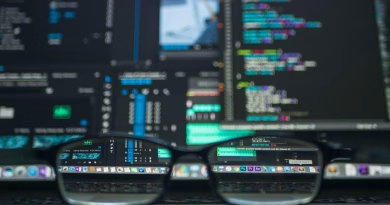Hiring by AI: Can a Bot Really Pick a Better Candidate Than a Human?
The process of hiring has always been one of the most inefficient and frustrating parts of business. Human recruiters spend countless hours sifting through mountains of resumes, their eyes glazing over. Decisions are often made based on gut feelings, and the entire process is notoriously riddled with unconscious biases that can filter out incredible talent for all the wrong reasons.
Into this flawed, human-centric process comes a radical new solution: artificial intelligence. A new wave of AI-powered recruitment platforms promises to make hiring faster, cheaper, and—most controversially—fairer. These tools can analyze thousands of applications in seconds, screen video interviews, and predict a candidate’s potential for success.
But this raises a critical question: Can an algorithm truly be a better judge of human potential than a human?
The Promise: The Case for the AI Recruiter
The argument for using AI in hiring is built on a foundation of efficiency and the dream of pure objectivity.
- Blazing Speed and Scale: The most obvious advantage is scale. An AI can screen 10,000 resumes for relevant skills, keywords, and experience in the time it takes a human to get through a handful. This dramatically shortens the hiring cycle and allows companies to consider a much wider pool of applicants.
- The Dream of Unbiased Hiring: Proponents argue that a properly configured AI can be “blind” to demographic information. It can be programmed to ignore a candidate’s name, gender, age, or university, focusing solely on the skills and qualifications required for the job. In theory, this could eliminate the human biases that have plagued hiring for centuries.
- Data-Driven Matchmaking: Beyond just keyword matching, some AI tools analyze the profiles of a company’s existing top performers. They then look for new candidates who share those same patterns of experience and skills, using data to predict who is most likely to succeed in that specific role.
The Peril: The Ghost in the Machine
While the promise is alluring, the reality is fraught with significant risk and ethical dilemmas. The dream of an unbiased machine can quickly turn into a nightmare of “bias laundering”—using technology to disguise and even amplify discrimination.
- AI Inherits Our Biases: This is the single biggest problem. An AI model is only as good as the data it’s trained on. If a company trains its hiring AI on its last ten years of hiring decisions, and those decisions were biased against certain groups, the AI will learn those biases and apply them with ruthless, automated efficiency. Amazon famously scrapped an AI recruiting tool after discovering it had taught itself to penalize resumes that included the word “women’s” because it learned from a historical dataset dominated by male engineers.
- The Problem of “Proxies”: An AI might not be explicitly told to discriminate based on race, but it might learn that candidates from certain zip codes or who attended expensive universities tend to get hired more often. It then starts favoring those candidates, effectively using wealth and location as a proxy for race and class, creating a new, hidden layer of systemic bias.
- The Dehumanization of Hiring: Candidates risk being reduced to a collection of keywords. An AI can easily overlook a talented individual with an unconventional career path. It can’t read between the lines of a cover letter to see passion, or recognize the resilience of someone who has overcome adversity. The intangible human qualities that make a great employee are often invisible to an algorithm.
The Verdict: A Powerful Tool, Not a Final Judge
AI should not, and cannot, be the final decision-maker in hiring. Handing over that responsibility to a machine is an abdication of leadership.
The most effective and ethical approach is a hybrid one. AI can be an incredibly powerful tool at the top of the hiring funnel—helping to screen a massive volume of applications to find a qualified pool of candidates. But the crucial, final stages—interviewing for cultural fit, assessing creativity, testing soft skills, and making the final offer—must remain deeply human.
The goal isn’t to create a bot that can pick the perfect candidate. The goal is to use bots to help humans become better, more efficient, and more objective recruiters. The companies that get this balance right will win the war for talent. Those who blindly trust the algorithm will be left with a workforce that lacks the very human spark that drives innovation.




